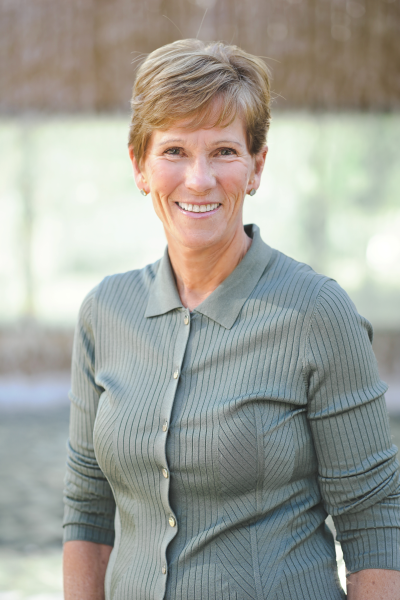Building a skilled talent base in digital technologies: Part two of Q&A with Sue Paish, CEO of DIGITAL
 Sue Paish (photo at right) has been CEO of DIGITAL since the federally funded, Vancouver-based global innovation cluster started operating in 2018.
Sue Paish (photo at right) has been CEO of DIGITAL since the federally funded, Vancouver-based global innovation cluster started operating in 2018.
Prior to leading DIGITAL, she held leadership roles in major Canadian organizations, including as CEO of LifeLabs, Canada’s largest diagnostic lab. As CEO of Pharmasave, Paish oversaw the delivery of some of the first online access tools for medication management. Additionally, as the first woman managing partner of Fasken Vancouver, she spearheaded the merger of three leading Canadian law firms into a leading pan-Canadian firm.
Paish serves on the boards of TELUS International, Canadian Tire, and Own the Podium. She has previously chaired the Business Council of British Columbia and the Vancouver Board of Trade.
In part two of a Q&A with Mark Lowey, Research Money’s managing editor, Paish talks about DIGITAL’s focus on skills training, the cluster’s investment in Indigenous-led talent and connectivity projects, diversifying the cluster’s investment base, her long-term vision for DIGITAL, the consequences of a possible change in federal government, and the risks of the incoming Donald Trump administration in the U.S.
In part one of the Q&A, which was published on January 8 (and included DIGITAL’s key performance indicators), Paish discussed DIGITAL’s engagement with Canadian small and medium-sized enterprises, how SMEs have benefitted from participating in DIGITAL’s network, how intellectual property is handled, the accomplishments she’s most proud of during her time as CEO, and the biggest challenges the innovation cluster has faced.
R$: DIGITAL has focused a lot of its work in the natural resources and health sectors and in skilling – developing a digital workforce. The focus on skilling, including the partnership with Simon Fraser University and the educational webinars, seems to be especially strong in DIGITAL. Was skills training a goal right from the start?
SP: It was a deliberate intention from the very earliest days because we knew that if Canada didn’t build a skilled talent base, then we wouldn’t be able to grow companies that are building world-leading innovative technologies because there wouldn’t be the people to actually do that work and deploy those technologies. We all know Canada has a very well-deserved recognition as a phenomenal country for research. Academic research is one of the places where we do celebrate and excel. If we don’t commercialize that research and turn it into products and services that can be deployed to grab opportunities or solve big problems, then what we’re relinquishing is huge opportunity for Canada because other countries will do that. And that’s been our history, that we have recognized leaders who win awards from the Nobel Prize and beyond in academia. When you look at what happens to their discoveries in their research, it gets commercialized outside of Canada.
So that was one of the things we wanted to tackle in DIGITAL. Then when we looked at the talent base we saw this dichotomy of a lack of skilled talent and populations that wanted to participate in the digital economy, who didn’t want to be in minimum wage jobs the rest of their lives but couldn’t afford to do so. Many of these people were marginalized from society. Think of [people in] Indigenous communities, people who live at or below the poverty line, people in remote rural settings. That was one of the challenges we saw for ourselves [at DIGITAL], and early on we dove into talent as a material part of DIGITAL’s value proposition.
One of our earliest projects was created by a company called NPower. The name of the project is the Canadian Tech Talent Accelerator. That has attracted investment from Microsoft and the CIBC Foundation and a small company called Blueprint. That project alone has put 6,400 Canadians on the path to employment. Eighty percent of the NPower program graduates secured employment within six months of graduation or enrolled in further education. I’m proud of that because I think we’re one of the few organizations in Canada that takes this approach to skilling. It’s not about putting people through a course and they get a diploma. Those programs are good.
[But] this is about putting people who wouldn’t otherwise be able to contribute to society in a way they want to and can, and giving them the skills and the placement opportunities to be contributing citizens for the rest of their lives.
R$: DIGITAL has since its inception been committed to supporting economic reconciliation by investing in Indigenous-led talent and connectivity projects. What are two or three examples of DIGITAL’s work in this area?
SP: An example is a project called Digital Horizons where this project equipped 420 Indigenous people from 93 communities across B.C. – some of them really remote and small – and skilled them for in-demand jobs, jobs that would lead to long-term employment and career pathing. This happened because we were able to provide them through the [project] consortia not just training for particular jobs but skills on how to be job-ready. The project included a work-integrated learning program that involved the First Nations Technology Council. It exceeded all of the expectations that the participants had, with over 80 percent of students laddering from the skilling that they received into self-employment or even follow-on training to better their skills. So an 80-percent graduation for citizens that live in remote rural communities, many of them Indigenous That’s a really good outcome.
Another example is from Canada’s North, an investment we made in an organization called Pinnguaq (pronounced peen-wa) to provide micro-credentials. In Nunavut there was a shortage of skilled labour in the technology domain. And at the same time, there was a growing landfill full of discarded equipment – think of laptops, cell phones. This particular part of the country doesn’t have a recycling program. DIGITAL comes in and says: Why don’t we help skill people on how to refurbish and repair the laptops and cellphones and the other technologies that are being thrown into the landfill? We created a micro-credentialing course that was developed with the Inuit communities in the area and created opportunities for internships for 980 people. Pinnguaq provided training across the Territories, including digital skills training, hardware refurbishment, recycling and micro-credentials. We aren’t talking huge numbers here, but we are talking huge impact.
R$: What’s your longer-term vision for DIGITAL? Where would you like to see the global innovation cluster in 10 years?
SP: DIGITAL can be and needs to be an internationally respected and globally recognized innovation enterprise, with a broad investor base. [These are] investors, whether they are research institutions, multinational organizations, industry associations or government departments, who can see the value that we deliver in a model that’s obsessed with delivering meaningful outcomes and impacts, through this model of collaborative innovation. We’ve got real expertise in bringing organizations together from academia, government, community, SMEs and multinationals that might not normally work together or even know each other, and facilitating conversation and work that produces digital technologies that solve some of the world’s biggest problems or capture opportunities for their organization or their country and the world.
We do this at the speed of industry. That’s the other thing that’s critical about how we operate. We work fast and if results aren’t coming we move on to the next opportunity because the world’s not waiting for anyone when it comes to delivering these outcomes and solving these challenges. This means we’re going to focus a lot on the natural resources sector, in particular helping industry in the mining sector power the global move to sustainable energy production. There’s no place better on the planet than Canada to lead that transition, and DIGITAL can be helping industry, academia, innovators, governments and communities work on leveraging Canada’s global mining expertise into driving global sustainable energy.
We are going to continue to focus on skilling. We’ve been leveraging AI since 2018. Before AI was really a headline item, we were using AI because digital technologies are based on data and AI is really the vehicle for leveraging that. [We’re also going to continue] helping to build a healthier world by improving the outcomes and the access to health systems and the sustainability of health systems at home and abroad.
R$: In diversifying DIGITAL’s investor base, is the ultimate goal to make DIGITAL a self-sustaining organization financially?
SP: Ultimately, [yes]. We think we have a value proposition that would be attractive to global investors, whether it’s a research institute or a foundation or a community organization, as well as multinationals. You look at multinationals that have seen a value proposition already with the work that we’ve been doing with Microsoft since the very beginning, with TECK Resources, Rio Tinto and Medtronic. These kinds of organizations have come to DIGITAL to explore the model and they’ve stayed with DIGITAL and continued to invest because they’ve seen the value. We think that value proposition resonates beyond Canadian companies or beyond the realm of the multinationals that we currently have. We’re excited about that value proposition with research institutes and foundations and companies around the world.
R$: The polls are telling us that we’re likely to see a change in the federal government this year. If that happens, do you think the work started by DIGITAL will continue, even if there’s no further federal funding for DIGITAL and the other global innovation clusters?
SP: In the beginning of DIGITAL I would say we’re in the first five years of a 105-year organization. So now we’re in our second five years. Our vision has always been to be a 105-year apolitical organization that’s got robust and diverse financials, that can withstand changes in government or changes in investors. We’ve had and continue to have relationships with various levels of government – the federal government, the provincial government {and} community organizations that are funded by government. We have great relationships with academia across the country and beyond, and with our private sector partners from small companies up to multinationals.
I’m confident that based on a few of our key performance indicators – you look at the investment rate where for every dollar we invest, our private sector partners and other partners in our projects invest $1.50. That’s attractive to other investors. We’ve also got the outputs that we’ve delivered in terms of IP assets, in terms of the products and services that are in market today solving problems and generating revenue. [There’s also] the growth that we’ve generated and supported in SMEs. We’ve got 1,640 companies that we work with and those companies are here because they see value.
So regardless of what may happen in political environments, we are excited and confident that this model has value. And I will say it has value to the Canadian taxpayers. So I’m hopeful, regardless of what happens in any election in the country, that policymakers will look at how can we grow Canadian companies, how can we build Canadian jobs, how can we produce products and services that are deployed in 96 countries around the world. Let’s be excited and proud about that. I’m very optimistic for the future and I’m very grateful to the organizations that came onboard back in 2018 and have continued to invest alongside us and help the success of this organization. I’m exceptionally proud of the small and mighty team that we have here that has powered through things like the pandemic and produced amazing results in the most difficult times this country has faced. We’re on to something here and I want to see it going long after I’ve left the planet.
R$: Are there any concerns for DIGITAL and its partners about the incoming Donald Trump administration, given that Trump has vowed to slap a 25-percent tariff on Canadian goods coming into the U.S.?
SP: I’ll go back to the foundation of DIGITAL, which is to solve some of industries’ and societies’ biggest challenges. Those might be amplified by a tariff but they’re not going away. Not even two years after this organization got started, the world shut down with the COVID pandemic. This organization flourished during that time because we brought organizations together that wouldn’t normally sit at a table together and said: How can we solve some of these problems and how can we do it together, how can we listen to and learn from each other? How can we create products and services that are both solving problems and delivering value to Canadian companies so that they can grow? We did that through one of the most difficult times in the last 30 or 40 years.
So what happens around the world, whether it’s tariffs or pandemics, this organization has proven that it’s resilient. It delivers value to a broad spectrum of companies, from manufacturers through to researchers through to technology providers through to community organizations and government departments. And if something happens that is unexpected or expected, this organization is going to adapt to it. If there are concerns about policies that might come in from other countries, we know how to deal with that. We will deploy our model and support Canadian companies, and we will show that this model will help provide value to any government that wants to get involved with us, regardless of where they are.
R$
| Organizations: | |
| People: | |
| Topics: |
Events For Leaders in
Science, Tech, Innovation, and Policy
Discuss and learn from those in the know at our virtual and in-person events.
See Upcoming Events
You have 0 free articles remaining.
Don't miss out - start your free trial today.
Start your FREE trial Already a member? Log in
By using this website, you agree to our use of cookies. We use cookies to provide you with a great experience and to help our website run effectively in accordance with our Privacy Policy and Terms of Service.


.jpg)


